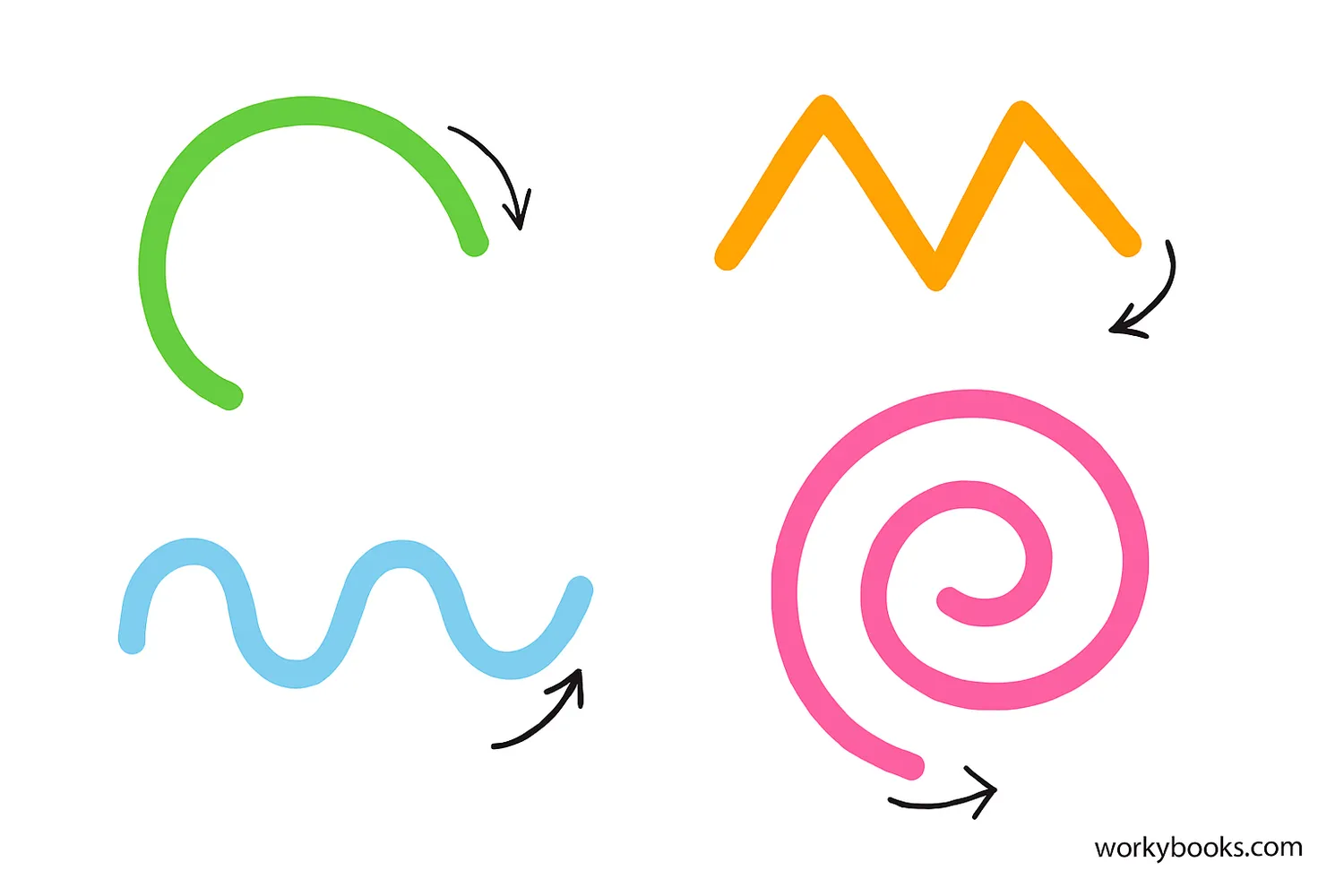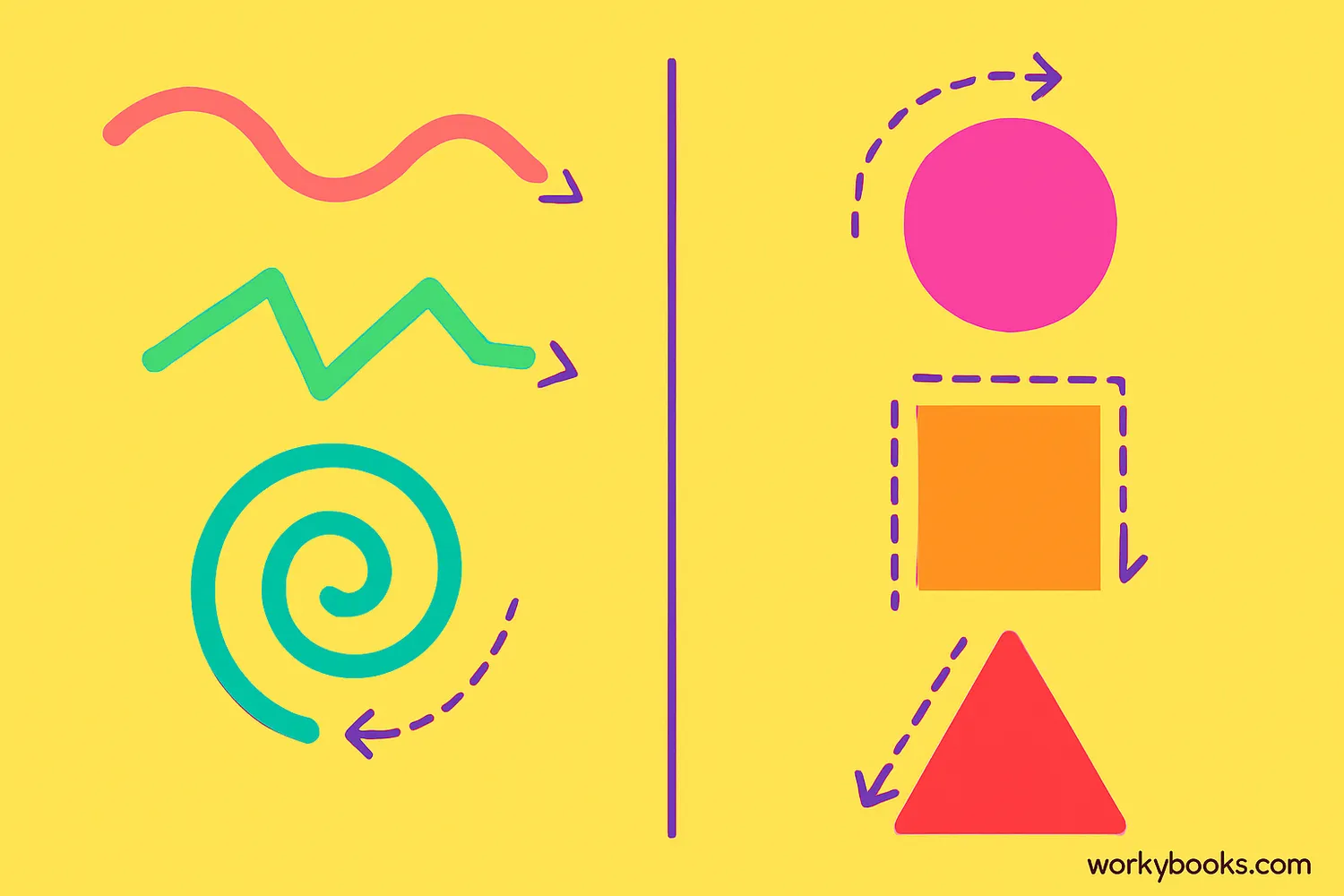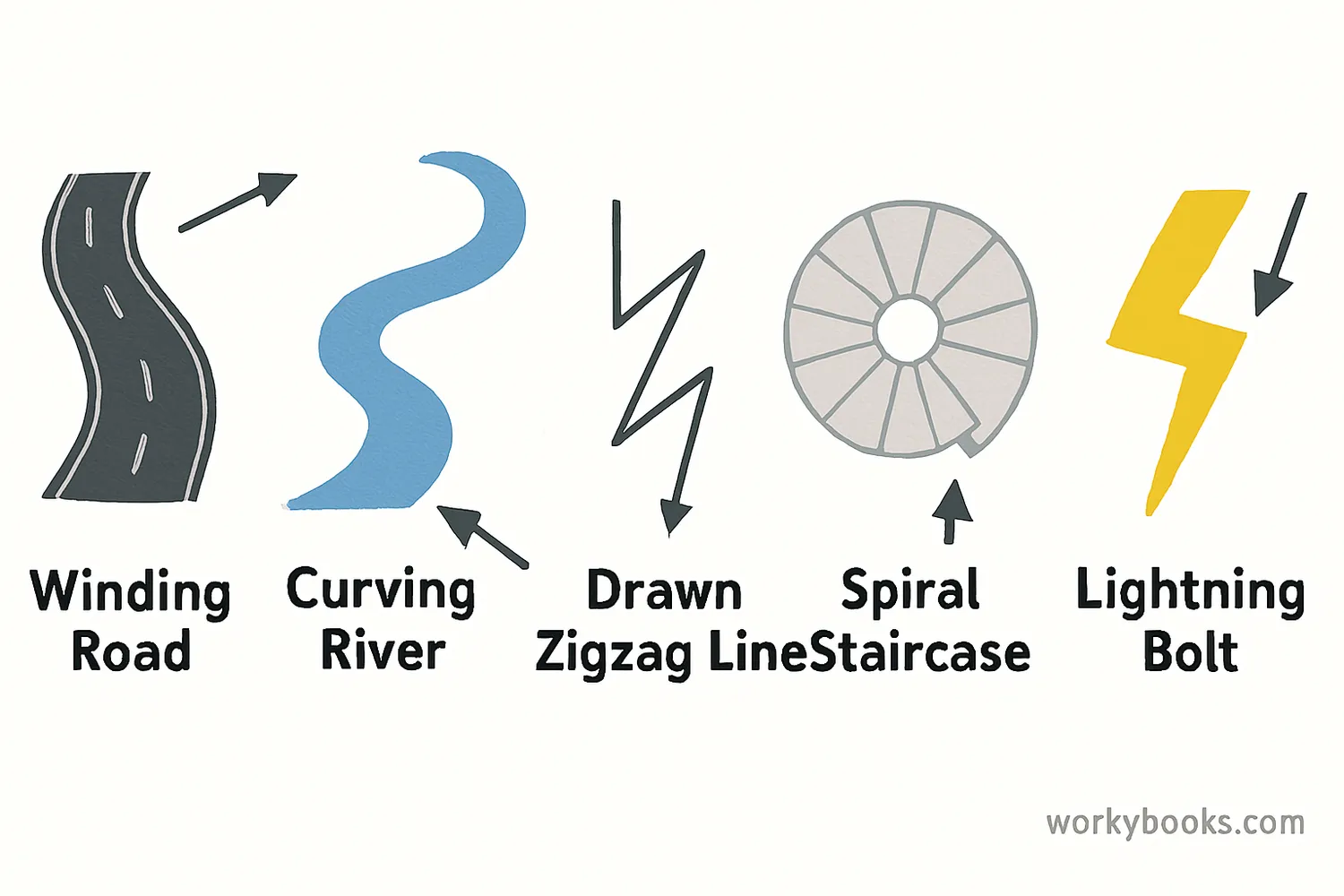Open Shapes - Definition, Examples, Quiz, FAQ, Trivia
Understanding the Difference Between Open and Closed Shapes
What is an Open Shape?

An open shape is a shape that does not connect at both ends. Think of it like a path that has a beginning and an end, but the two ends don't meet to form a complete loop.
Open shapes are all around us! When you draw a straight line or a curved line on paper, you're creating an open shape. These shapes have openings or gaps, which means you can't walk all the way around them without lifting your pencil.
Math Fact!
Open shapes are sometimes called "unclosed shapes" because they don't form a complete boundary around an area.
Open vs Closed Shapes

The main difference between open and closed shapes is whether the shape forms a complete boundary. Let's compare them:
Open Shapes
Have openings or gaps at the ends
Closed Shapes
Form complete loops with no openings
Open Examples
Straight lines, curves, zigzags, spirals
Closed Examples
Circles, squares, triangles, rectangles
Easy Test
Can you trace it without lifting your pencil and end where you started?
A simple way to tell if a shape is open or closed is to imagine walking along its path. If you can walk the entire path and return to your starting point without lifting your feet, it's a closed shape. If you can't return to the start without lifting your feet, it's an open shape!
Examples of Open Shapes

Open shapes appear everywhere in our daily lives! Here are some common examples you might recognize:
Straight Lines
The simplest open shape with two distinct endpoints
Curved Lines
Gentle bends that don't connect back to the start
Zigzags
Sharp angles that go back and forth without closing
Spirals
Curves that wind around but don't complete a circle
Real World
Roads, rivers, drawn lines, lightning bolts
Look around your classroom or home. Can you spot any open shapes? Maybe the pattern on the floor, the way a cord lies on the ground, or the path you walk to get from your desk to the door. All of these are examples of open shapes in the real world!
Did You Know?
Many letters in the alphabet are open shapes! Letters like C, U, J, and L don't form complete loops, while letters like O, D, and B are closed shapes.
Open Shapes Quiz
Test your knowledge with this quiz! Answer all 5 questions to see how much you've learned about open shapes.
Frequently Asked Questions
Here are answers to some common questions about open shapes:
Shape Facts
Discover some fascinating facts about shapes and geometry!
Endless Variety
There are infinitely many possible open shapes! Any path you can draw without connecting the ends creates a unique open shape.
Art Connection
Many famous artists use open shapes in their work. Continuous line drawings, where the artist doesn't lift the pen, create interesting open shapes that flow across the paper.
Nature's Shapes
Nature is full of open shapes! Rivers, lightning bolts, tree branches, and coastlines are all examples of open shapes found in the natural world.
Math History
The study of shapes dates back thousands of years to ancient civilizations like the Egyptians and Greeks, who used geometry to build pyramids and temples.





